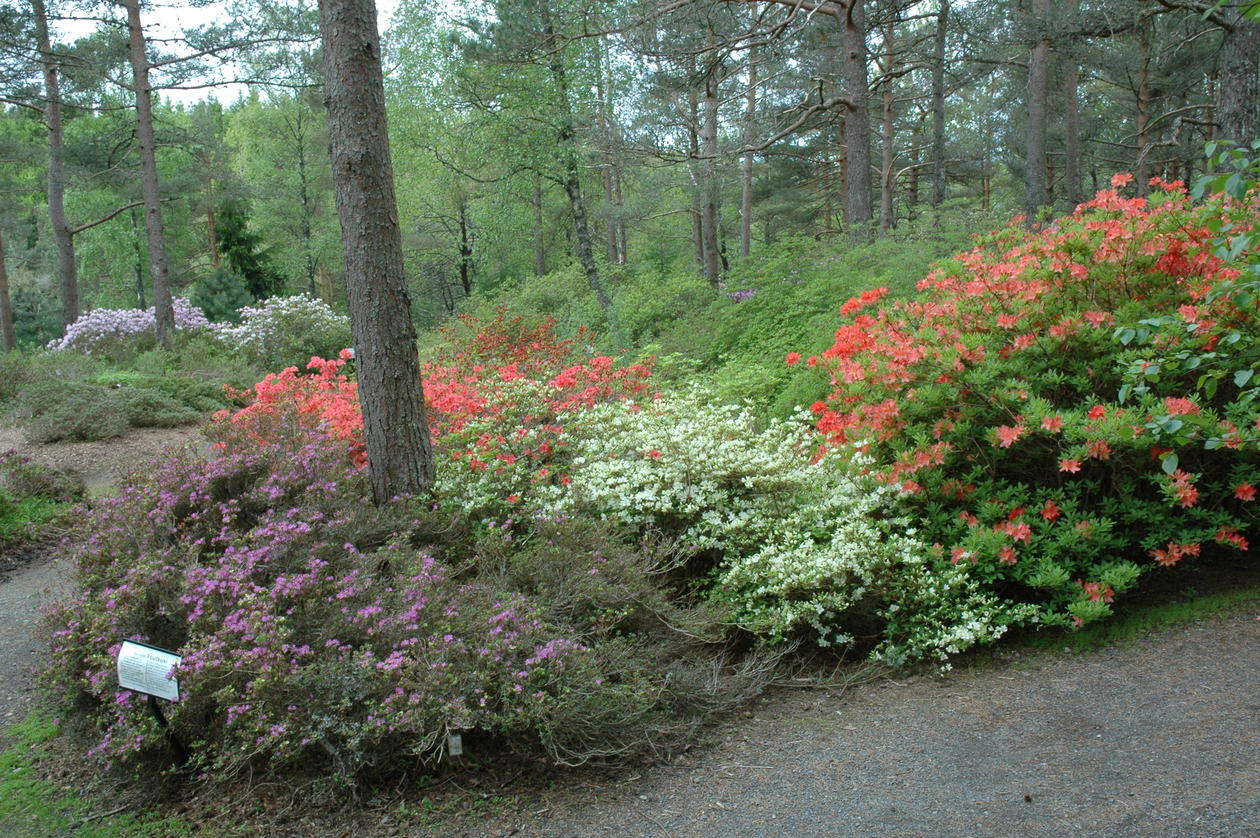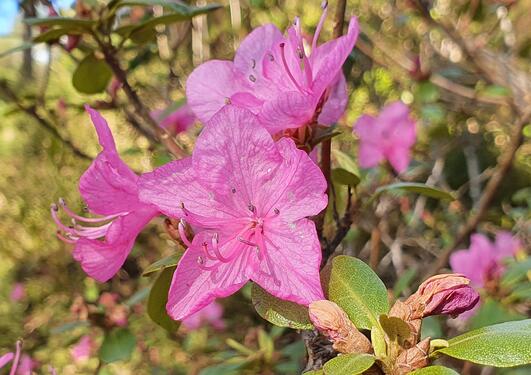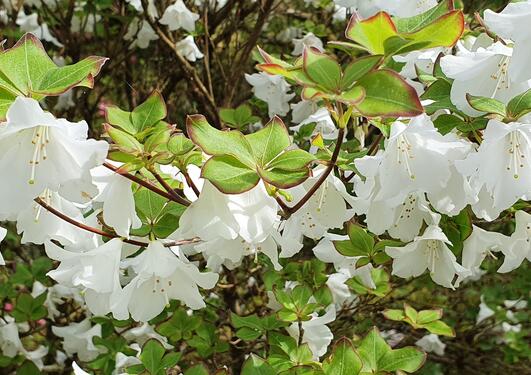The Rhododendron species collection
The Rhododendron species collections shelter within the pine woods at the northern end of the Arboretum.

Main content
The Rhododendron species collections include around 300 species, often represented by multiple specimens of different origins and diverse forms. Many are documented collections from the wild, or from seeds resulting from hand-pollination of plants of wild origin and are therefore of importance for ex situ conservation.
We present the species according to the Edinburgh classification system, authored largely by James Cullen & David Chamberlain in the late 1970s. It divides the genus into subgenera, sections and subsections.
Subgenus Rhododendron
Lepidote species, i.e. with leipidote (scale) hairs on the underside of their usually small leaves. They are low-growing mountain plants, often with blue-violet flowers.
The type species, R. ferrugineum, on which Linnaeus based his name is located here.
Subgenus Hymenanthes
Elepidote species, i.e. without scale hairs. These are the larger, evergreen shrubs that most people perceive as the actual rhododendrons. They have leaves that are usually hairy on the underside and the flowers are often white or pink.
The so-called 'azaleas'
Mainly deciduous shrubs, most often with flowers in reddish orange or yellow. This group consists of six subgenera, of which we can only present four. They are relatively distantly related to each other and do not constitute a systematic unit as the popular term azalea suggests. About 500 species are found in cultivation, but several of these are not hardy enough to be grown outside here.



